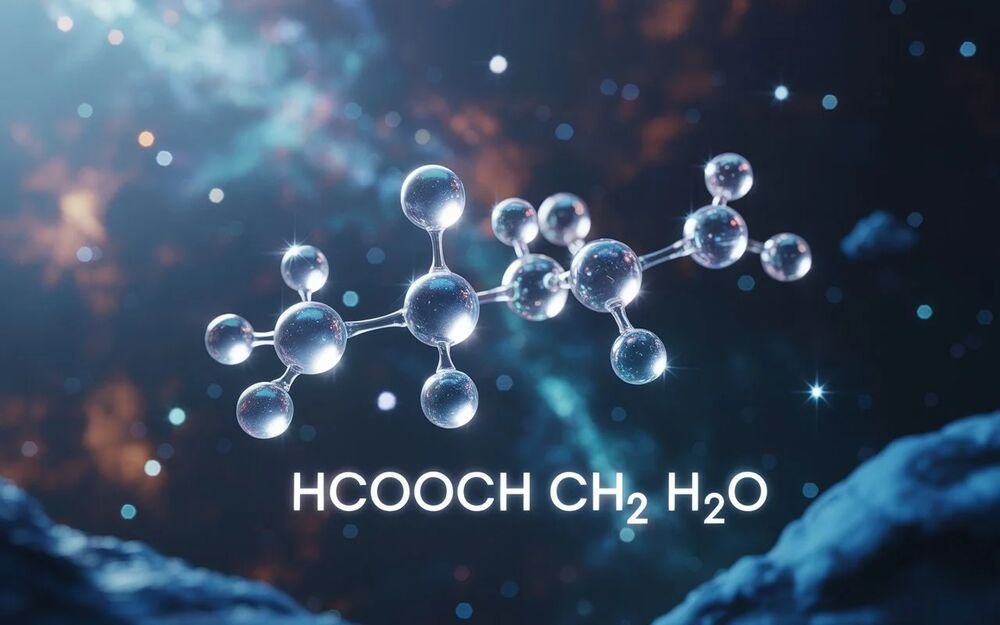HCOOCH CH₂ H₂O – Reaction, Structure, and Applications
Introduction to HCOOCH CH₂ H₂O In the vast world of organic chemistry, chemical compounds often hold more than meets

Introduction to HCOOCH CH₂ H₂O
In the vast world of organic chemistry, chemical compounds often hold more than meets the eye. One such compound, HCOOCH CH₂ H₂O, has emerged as a subject of growing interest due to its unique structure and reaction behavior. This compound brings together a formate ester group (HCOOCH), a methylene or vinyl group (CH₂), and water (H₂O) to form a reaction system that is essential in both laboratory studies and industrial applications. Understanding the properties and mechanisms of this compound helps chemists unlock pathways for synthesis, hydrolysis, and environmentally sustainable processes. As the demand for efficient, green, and safe chemicals grows, so does the significance of compounds like HCOOCH CH₂ H₂O.
Breaking Down the Formula
To fully grasp the nature of HCOOCH CH₂ H₂O, one must first deconstruct its chemical parts. The term “HCOOCH” typically refers to methyl formate, an organic ester formed from formic acid and methanol. It is a colorless liquid with a pleasant odor and a relatively low boiling point, making it highly volatile. The next component, “CH₂,” may be interpreted in different contexts as either a methylene group (as part of a longer chain) or as vinyl (CH=CH₂) in some reactions, indicating potential reactivity. Finally, water (H₂O) plays a crucial role in hydrolysis reactions, serving as a solvent medium. This combination suggests a system where esters are likely to react with water in the presence of a methylene or vinyl group, thereby setting the stage for necessary chemical transformations.
Chemical Structure and Nomenclature
HCOOCH CH₂ H₂O does not refer to a single fixed molecule but is instead a shorthand for an interaction or reaction among specific groups. The structure of methyl formate (HCOOCH₃) features a simple ester bond between a formic acid group and a methyl group. When paired with CH₂ and H₂O, the likely scenario involves the hydrolysis of this ester in the presence of water, resulting in the formation of formic acid and methanol. Alternatively, the CH₂ fragment may indicate a reactive center capable of further bonding or undergoing addition reactions. According to IUPAC standards, the names would vary depending on the specific molecules formed in the response. For instance, methyl formate is referred to as the methyl ester of methanoic acid, while vinyl formate would be ethenyl methanoate. Understanding these naming conventions helps in identifying the correct compounds involved.
Reaction Mechanism and Behavior
The core of the chemistry behind HCOOCH CH₂ H₂O lies in its reactivity. When methyl formate undergoes hydrolysis in the presence of water, the ester bond breaks down to form formic acid and methanol. This reaction can be acid- or base-catalyzed, and it is reversible under certain conditions. If CH₂ represents a vinyl group, it can undergo nucleophilic addition, allowing water molecules to attack the double bond, leading to hydration products. These mechanisms are widely studied due to their relevance in organic synthesis and reaction engineering. In more advanced setups, formyl methylene intermediates may form, offering insights into carbocation or radical chemistry.
Physical and Chemical Properties
Methyl formate, the key ester in this system, is known for its low boiling point (~32 °C), high vapor pressure, and moderate solubility in water. It has a sweet, alcohol-like aroma and is highly flammable. Its physical characteristics make it ideal for quick-evaporating solvents and aerosol formulations. In reactions involving water, methyl formate shows significant reactivity due to the polar ester group. The presence of CH₂ or vinyl groups introduces unsaturation, which is a site of high chemical activity, making these molecules versatile in synthesis. The mixture behaves differently under acidic or basic pH levels, where hydrolysis rates can vary significantly. Temperature and concentration also influence the reaction pathway and the yield of the product.
Industrial and Laboratory Applications
HCOOCH CH₂ H₂O systems have a wide range of applications, primarily due to the usefulness of methyl formate and related esters. In industry, methyl formate is used as a solvent in adhesives, paints, and coatings. It also acts as an intermediate in the production of formamide, dimethylformamide (DMF), and other chemicals. In pharmaceuticals, esters like these play a role in drug delivery and formulation. The CH₂ group, especially in the form of vinyl derivatives, can be polymerized to create resins or plastics. In green chemistry, the reaction of methyl formate with water is considered a cleaner route to produce formic acid without using hazardous chemicals. In laboratories, these reactions are studied to understand ester kinetics and optimize catalytic systems.
Safety and Handling Guidelines
Despite its usefulness, methyl formate and its derivatives must be handled with care. The compound is highly flammable and can form explosive mixtures with air. Prolonged exposure to vapors can lead to respiratory irritation and dizziness. Appropriate personal protective equipment (PPE) such as gloves, goggles, and lab coats should be worn when handling the substance. It should be stored in a cool, well-ventilated area away from sources of ignition. Safety Data Sheets (SDS) provide detailed guidance on first aid measures, firefighting procedures, and spill response. When handling water-reactive or vinyl compounds, potential exothermic behaviour should also be considered.
Environmental Impact and Biodegradability
One of the positive aspects of using compounds like HCOOCH CH₂ H₂O is their relatively low environmental footprint. Methyl formate is biodegradable and breaks down easily in the environment. Its hydrolysis products—formic acid and methanol—are less persistent and can be treated through standard wastewater treatment processes. However, improper disposal can still pose risks to aquatic life and soil quality. Therefore, eco-friendly alternatives and green processing techniques are emphasized when scaling up these reactions. Industries are now focusing on catalytic systems that reduce waste and energy usage, aligning with global sustainability goals.
Educational and Research Significance
In academia, HCOOCH CH₂ H₂O serves as a classic example to explain fundamental organic chemistry concepts such as ester hydrolysis, reaction kinetics, and nucleophilic substitution. It is frequently used in laboratory experiments for undergraduate and graduate students to study reaction rates and the effects of catalysts. Recent research focuses on modifying the structure to produce bio-based solvents and fuels. Scientists are also exploring advanced reaction pathways using AI and machine learning to model outcomes. The compound’s simplicity and versatility make it a valuable tool in both teaching and innovation.
Frequently Asked Questions (SEO Rich FAQs)
What does HCOOCH CH₂ H₂O represent in chemistry?
It symbolizes a reactive system involving methyl formate (HCOOCH), a methylene or vinyl group (CH₂), and water (H₂O), often used in ester hydrolysis studies.
Is this compound dangerous or toxic?
Methyl formate is flammable and should be handled with care. It can irritate the lungs, but is not considered highly toxic in small quantities.
What is the role of water in this reaction?
Water acts as a nucleophile in hydrolysis reactions, breaking down ester bonds into acids and alcohols.
How is this formula used in real-world applications?
It is used in the production of solvents, formic acid, and adhesives, as well as in academic studies of ester reactions.
Can this reaction be reversed or modified?
Yes, esterification is a reversible reaction. Modifications can be made using different catalysts or reactants.
Conclusion
The chemical behavior of HCOOCH CH₂ H₂O provides a compelling insight into the world of ester reactions, hydrolysis, and industrial chemistry. Whether viewed as methyl formate reacting with water or a more complex system involving vinyl derivatives, this compound holds immense value in synthesis, sustainability, and scientific understanding. Its properties, applications, and safety considerations make it a topic of relevance for chemists, educators, and environmentalists alike. As research continues to evolve, HCOOCH CH₂ H₂O will undoubtedly remain a key player in the push toward cleaner, more innovative chemical processes.
Also read interesting topics at Techkmagazine






